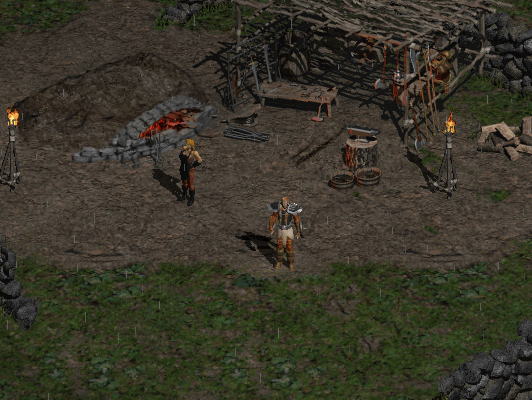I’m typing this in Firefox running on Linux Mint. I am also thoughtfully stroking my neckbeard as I gather my thoughts. Well, not really, but I do need to shave.
I occasionally think and write about making choices on who I do business and interact with, especially on the internet where the products are more intangible–software and services, not physical locations and goods. Avoiding a bad restaurant saves me gas (in multiple ways), avoiding a bad service or software is more about staking out a moral or ethical position, usually accompanied by me noting the fact somewhere online (this blog, social media, etc.) with the intent to broadcast my position to let others know where I stand, and to influence them to join me (JOIN ME), because if I think a company is evil, you should, too!
(I realize it is more nuanced than that, but go with it for now.)
The thing today, though, in 2023 and soon to be 2024, software and services have increasingly been consolidated into an ever-smaller number of mega-corporations, all of which, to varying degrees, engage in platform decay or, as Cory Doctorow more colourfully calls it, enshittification. Basically, this means most of your choices are bad, the degree just varies.
Possible solutions:
- Try even harder to go full FOSS (Free and Open Source Software), completely avoiding the offerings of the big companies (this can also apply to services or platforms, though it may be trickier)
- Avoid the internet
- Some combination of the first two
I’m opting for #3.
I’m writing about this now because I have come to another one of those points where I have to decide if I want to make a stand against a particular service/platform/piece of software, and it’s made me think about the whole thing and how so much of what we do online is wrapped up in one of the big tech companies. For me, this includes:
- Microsoft:
- Primary operating system (Windows 11)
- Primary email (Outlook)
- Cloud storage (OneDrive)
- Occasional apps (Excel, Word mostly)
- Apple:
- iPhone
- iPad Pro
- Secondary computer (Mac Studio)
- AirPods (for all of the above)
- iCloud (mostly for photos)
- Apple Music
Apple WatchTraded this for a Garmin Forerunner 255 a year ago
- Google:
- Google Maps (occasionally)
- Gmail (only checking it to keep it active)
- YouTube
There’s more, but you get the idea. In terms of hardware, I’m deep in the Apple ecosystem and software and services-wise, I am beholden largely to Microsoft. On the plus side, as giant evil tech companies go, I would rank both as less terrible than others, like Google and Meta. Microsoft, who for a time, had almost rehabilitated their reputation by embracing open source, Linux and giving out Windows 10 for free, has fallen in the last few years by going hard into ads, trying to monetize everything (the weather app in Windows 11 now has ads) and junking up their otherwise good Edge browser with shopping and other clutter/services. They have also junked up Windows 11, too (though have also continued to make improvements). Apple touts privacy and security, but it’s really about lock-in and making sure you never step outside their walled gardens, where they control everything. Some people see this as a positive!
I have made efforts to move away from the big tech companies–as mentioned, I’m making this post in Linux Mint–but my efforts are a bit scattershot, a bit piecemeal. I am always looking to improve.
And now I’ve reached a point where I’m making another small step to move away from a service that has adopted policies and positions I fundamentally disagree with. It’s not even the first time this particular company has garnered press over their stance.
I’m speaking of Substack. I wrote about the company previously. That was almost two years ago, and in the time since the platform has become even more popular with right-wing extremists, including literal Nazis. The founders of Substack recently confirmed that they are OK with Nazis being on their platform because censorship is bad, and they are also good with collecting Nazi money from those that charge for subs. Popehat, aka Ken White, neatly deconstructs Substack’s position here.
I am OK with Substack cozying up to Nazis and taking their money–it’s their choice to do so. Likewise, it is my choice to not be associated with a company or service that cozies up to Nazis and takes their money. I’ve decided to move my piddly newsletter, which I recently chose to revive, off of Substack, probably to another service called Buttondown, though that’s not 100% confirmed yet.
I’ll update on how this goes, as well as further updating about how others are responding to Substack’s now official position of “Nazis are OK!” I subscribe to several Substacks myself, and am very curious to see how the authors of these will react.





